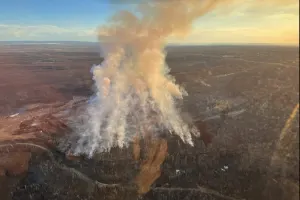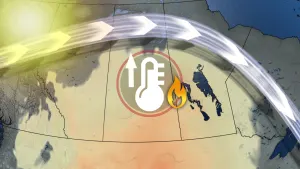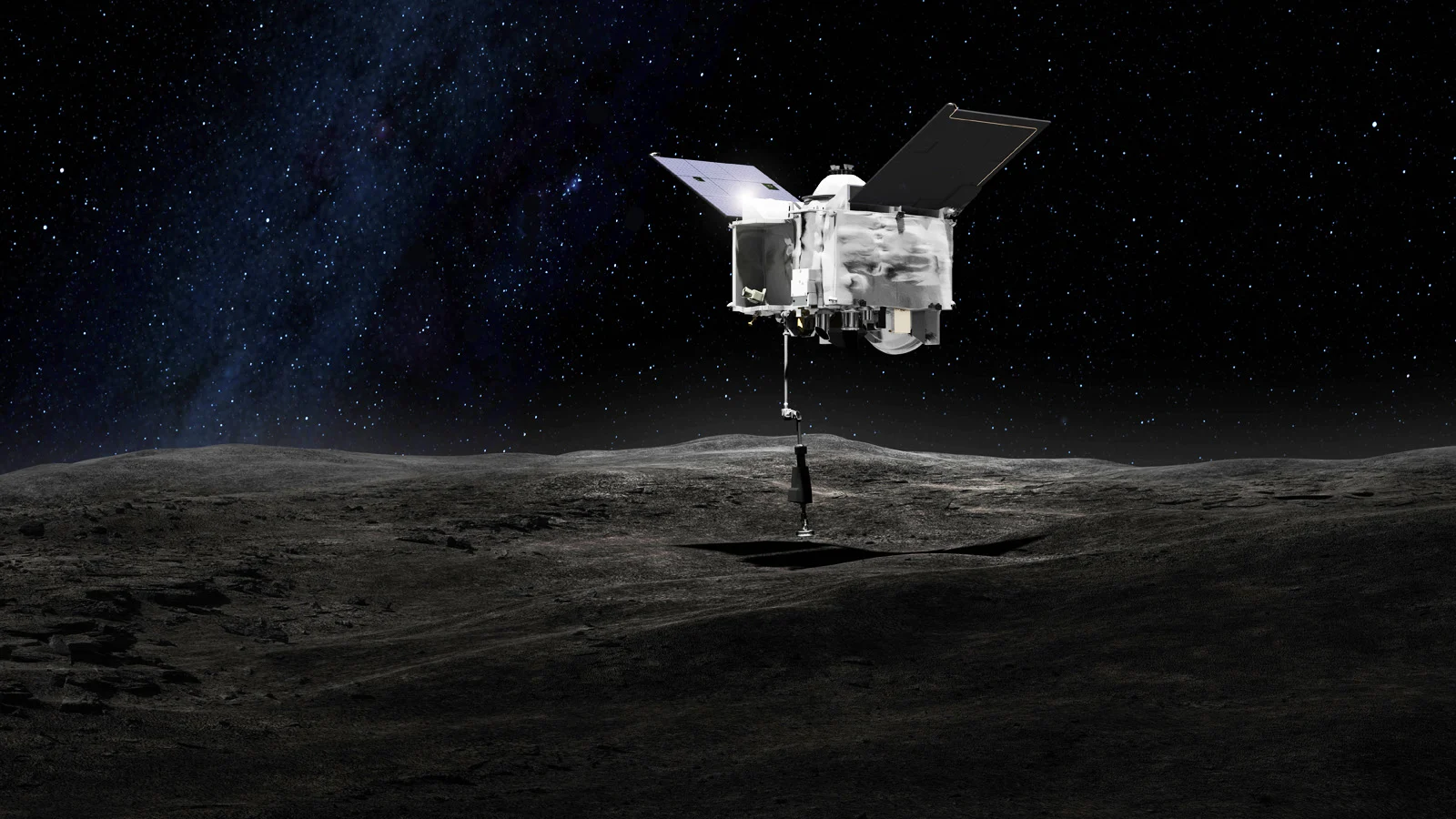
NASA's OSIRIS-REx probe successfully tags giant 'rubble pile' asteroid Bennu
Tuesday's 'touch and go' maneuver collected a pristine sample of the early solar system for return to Earth.
NASA's OSIRIS-REx spacecraft has now fulfilled its primary mission, to collect a sample from asteroid Bennu to bring back for study.
On the afternoon of Tuesday, October 20, a NASA spacecraft over 330 million kilometres away TAG'd a giant asteroid. During this Touch And Go maneuver, OSIRIS-REx successfully collected a sample from the surface of Bennu, a massive "rubble pile" the spacecraft has been orbiting since December 31, 2018.
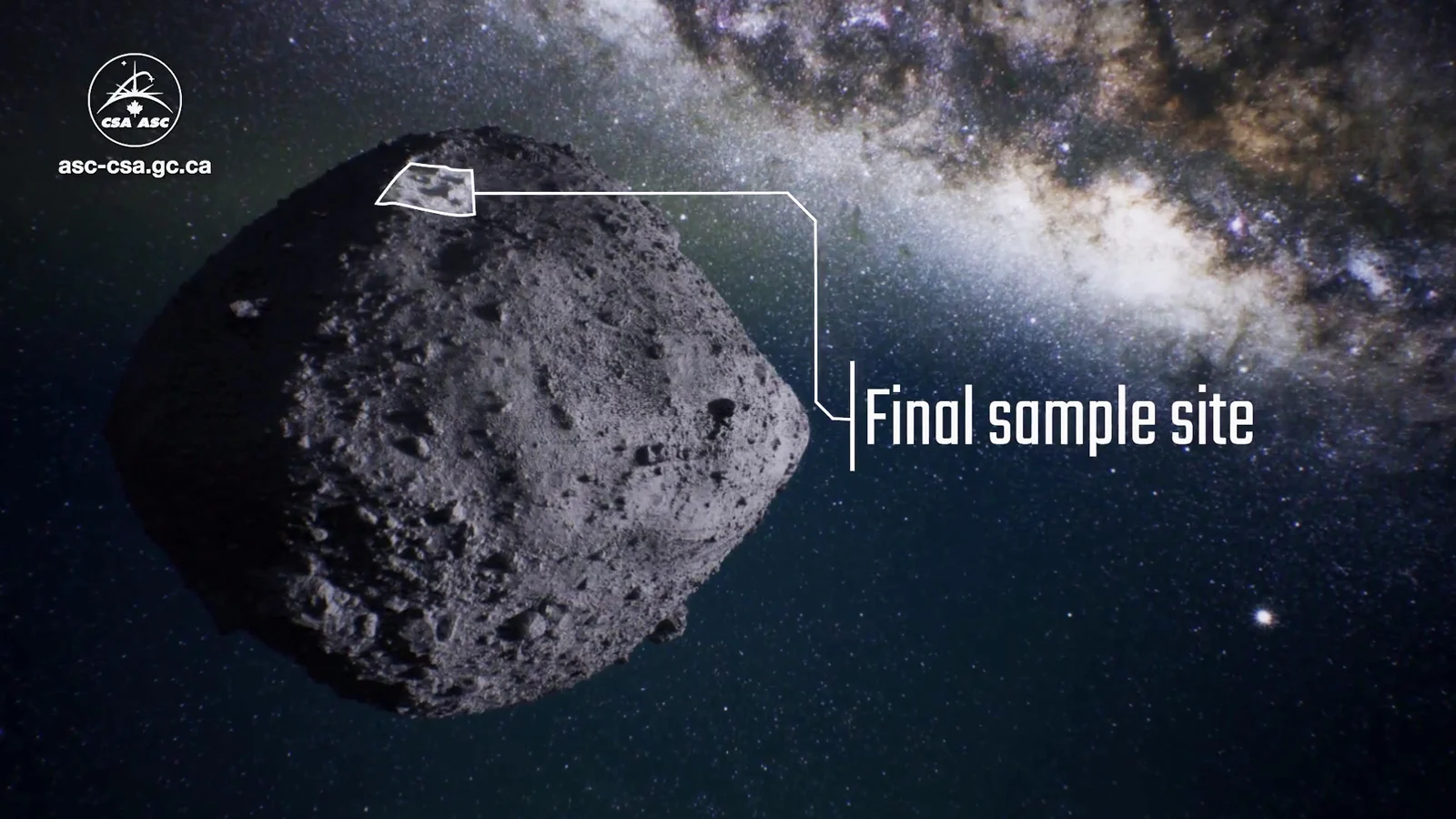
Asteroid Bennu is a giant collection of rock and dust, loosely held together by gravity. The primary' touch and go' site, Nightingale, is near Bennu's north pole. Credit: NASA, University of Arizona, Canadian Space Agency, York University, MDA
NASA and the OSIRIS-REx mission team broadcast this maneuver — as live as they could — on the afternoon of October 20, with the 'tag' taking place at 6:11 p.m. EDT.
We say "as live as they can" because OSIRIS-REx and Bennu are over 330 million kilometres away. At that distance, it takes nearly 37 minutes for NASA to talk to the spacecraft — 18.5 minutes for a message to travel there, and 18.5 minutes to receive a return message from OSIRIS-REx. So, the mission team was not be able to direct the spacecraft in real-time. Instead, the probe conducted this maneuver all on its own.
Additionally, while cameras on board OSIRIS-REx were snapping pictures throughout the maneuver, the mission team required all of the spacecraft's communications bandwidth to be focused solely on reporting its position and progress. Transmitting the pictures would have to wait until after the spacecraft had returned to its standard orbit around Bennu.
The live stream on the mission website (also shown on Twitch) gave us an animated look at where the spacecraft was and what it was doing, throughout the manuever. Towards the end of the sequence, from 5-6:30 p.m. EDT, NASA TV picked things up to broadcast a live feed from the mission control room at Lockheed Martin.
MISS THE EVENT? WATCH NASA'S REPLAY OF OSIRIS-REX'S BENNU TOUCH-AND-GO
MORE TO BENNU
OSIRIS-REx stands for Origins, Spectral Interpretation, Resource Identification, Security-Regolith Explorer. It's a somewhat rough acronym, but it does represent how diverse this mission is.
The spacecraft's primary purpose is to collect a sample from asteroid Bennu for return to Earth. While it has been orbiting the asteroid, though, it has been sending back copious amounts of data, which scientists have used to make some fantastic discoveries.
WATCH BELOW: TAKE A TOUR OF ASTEROID BENNU
In early 2019, the mission team reported that Bennu was actively ejecting particles into space. OSIRIS-REx's cameras spotted tiny bits of rock being launched away from the surface. While many of these fell back onto the asteroid due to gravity, several were able to escape.
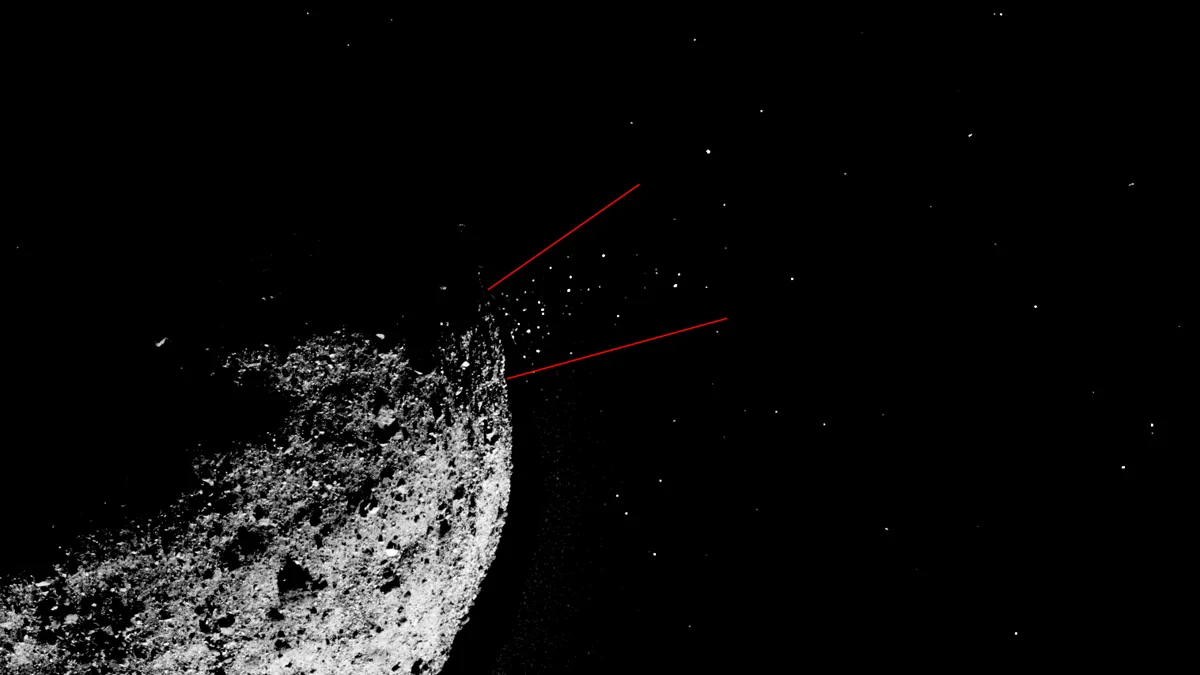
This composite image was snapped by OSIRIS-REx in January 2019. A short-exposure image on the left shows the details of Bennu's surface. In contrast, a long-exposure image captures a plume of materials being ejected from the surface to the right. Red lines frame the plume to highlight it better. Credit: NASA/Goddard/University of Arizona/Lockheed Martin/Scott Sutherland
There was nothing to indicate why this was happening at first. Since then, scientists with the mission have determined that it is likely due to a combination of two factors — meteoroid impacts and thermal fracturing.
This thermal fracturing was a discovery on its own. High-resolution images from OSIRIS-REx revealed boulders on Bennu's surface were cracked apart. This looked very similar to the thermal fracturing of rocks we see here on Earth, as they heat up during the day and cool at night. Here, though, air and water help the process along.
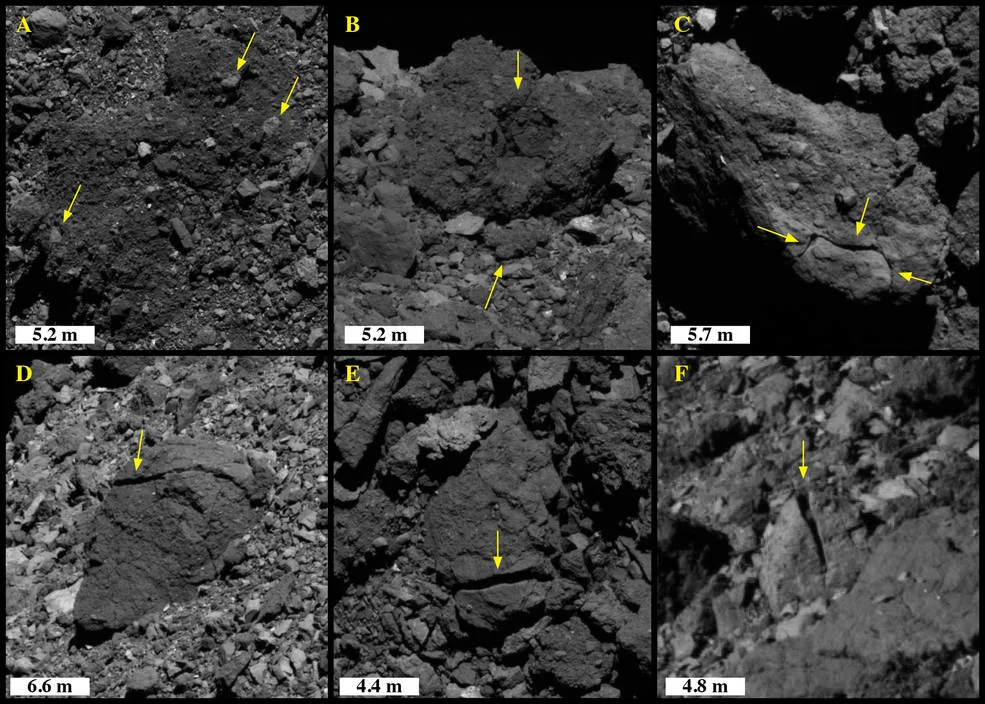
These close-up images of Bennu show examples of thermal fracturing due to sunlight. Credit: NASA/Goddard/University of Arizona
On Bennu, as it rotates every 4.3 hours, the repeated heating and cooling of its surface is breaking boulders, just due to the influence of sunlight!
The latest research, reported by NASA last week, could be the most exciting for those scientists waiting for the sample OSIRIS-REx is about to collect. The surface of asteroid Bennu is rich in organic material — site Nightingale included — which may contain carbon compounds commonly found in biology. While this does not indicate potential life on Bennu, it could provide answers to how life developed on Earth.
"The abundance of carbon-bearing material is a major scientific triumph for the mission," Dante Lauretta, the OSIRIS-REx principal investigator at the University of Arizona, said in a NASA press release. "We are now optimistic that we will collect and return a sample with organic material — a central goal of the OSIRIS-REx mission."

A year ago, OSIRIS-REx spacecraft captured this image, which shows one of asteroid Bennu's boulders with a bright vein that appears to be made of carbonate. Credits: NASA/Goddard/University of Arizona
Another study found that some rocks on Bennu appear to have bright carbonate mineral veins. Since these are known to form when water interacts with carbon dioxide, this discovery could provide clues to Bennu's origin. Whatever parent body the material in Bennu came from would have been destroyed long ago, but these bright veins point to it being a 'watery asteroid'.
And there's even more - from a football-field-sized 'void' near the centre of the asteroid, to the strange features of Bennu's surface, and even the presence of Vesta meteorites among its boulders!
Did you tune in for history-making moment for OSIRIS-REx? If not, check back soon for images the spacecraft snapped during the maneuver, and stand by for more amazing science to come!







